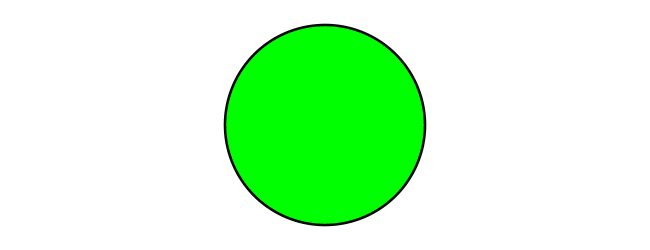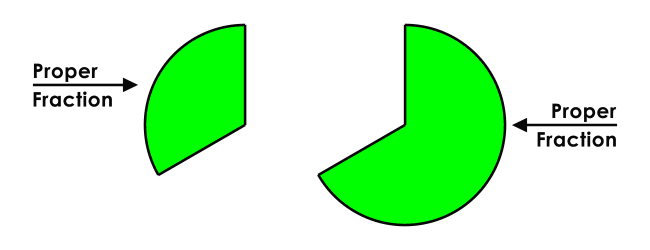A fraction whose quantity is less than the whole quantity is called a proper fraction.
Let’s know the meaning of proper fraction before learning its concept. The meaning of proper fraction can be understood from the meanings of the words “Proper” and “Fraction”. So, let’s know them individually.
Now, let’s understand the definition of the proper fraction by combining the meanings of them.
A quantity can be split into any number of equal parts, and it is acceptable to consider either one or more parts from the whole quantity as a fraction, but it is not proper to consider all the parts as a fraction, because the sum of all parts is equal to the whole quantity.
According to the fundamental definition of fraction, the quantity of a fraction is always less than the whole quantity. So, a fraction whose quantity is less than the whole quantity is called a proper fraction.
Let’s clearly learn what a proper fraction is from some simple understandable examples.
Consider a circle and split it into as many equal parts as you want. Here, the circle is divided into three equal parts and each part is basically called a fraction.

To understand the concept of proper fraction, a part is separated from the circle and the remaining part is the addition of two parts of the circle.

Learn how to express the proper fractions in mathematical form.
A free math education service for students to learn every math concept easily, for teachers to teach mathematics understandably and for mathematicians to share their maths researching projects.
Copyright © 2012 - 2025 Math Doubts, All Rights Reserved